Affiliate disclosure: This post may contain affiliate links. Please see our Privacy Policy.
Fireweed (Chamaenerion angustifolium), also known as rosebay willowherb, is an edible wild plant often found in disturbed areas.
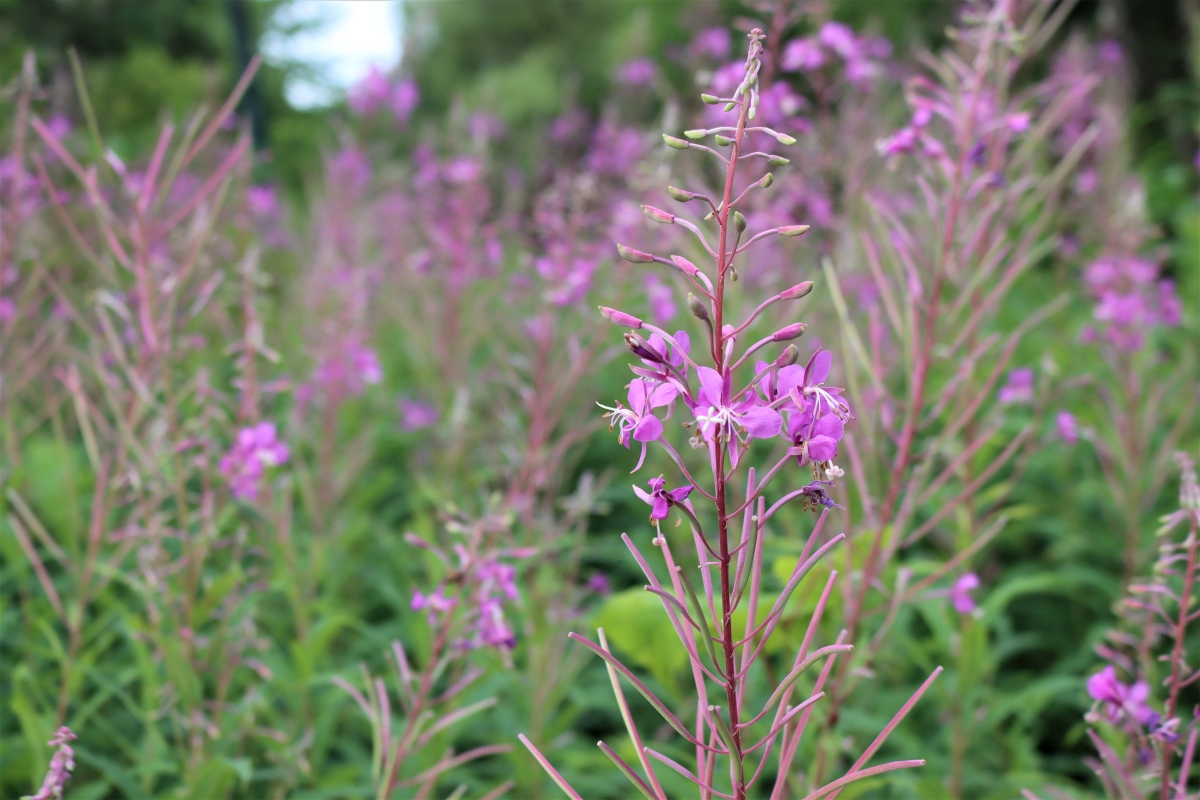
Fireweed is one of those distinctive plants that’s easy to identify and plentiful around the globe. The seeds are distributed by the wind in much the same way as dandelions, and they patiently wait for a disturbance that allows them to take root.
As the name fireweed suggests, they’re often the first to colonize after a wildfire clears the landscape. They’ll take root after volcanic eruptions as well, and it apparently grew profusely throughout Europe on the bombsites of WWII.
The disruption doesn’t have to be all that violent, and even simple disturbances like construction, landslides, floods, or even the simple digging of wild animals can trigger a patch to sprout.
Though it’ll grow just about anywhere, fireweed is especially treasured in northern latitudes where it has a long tradition as an edible wild plant. It’ll grow quickly in the short summers of the subalpine zone, and my friends in Alaska mark the progression of the summer by the progression of the fireweed blossoms.
When those last few blossoms open at the top of the stalk, summer has reached its end.
I found this patch in mid-summer, about halfway through its bloom cycle, near a rural pond where part of the bank had washed away in a flood.
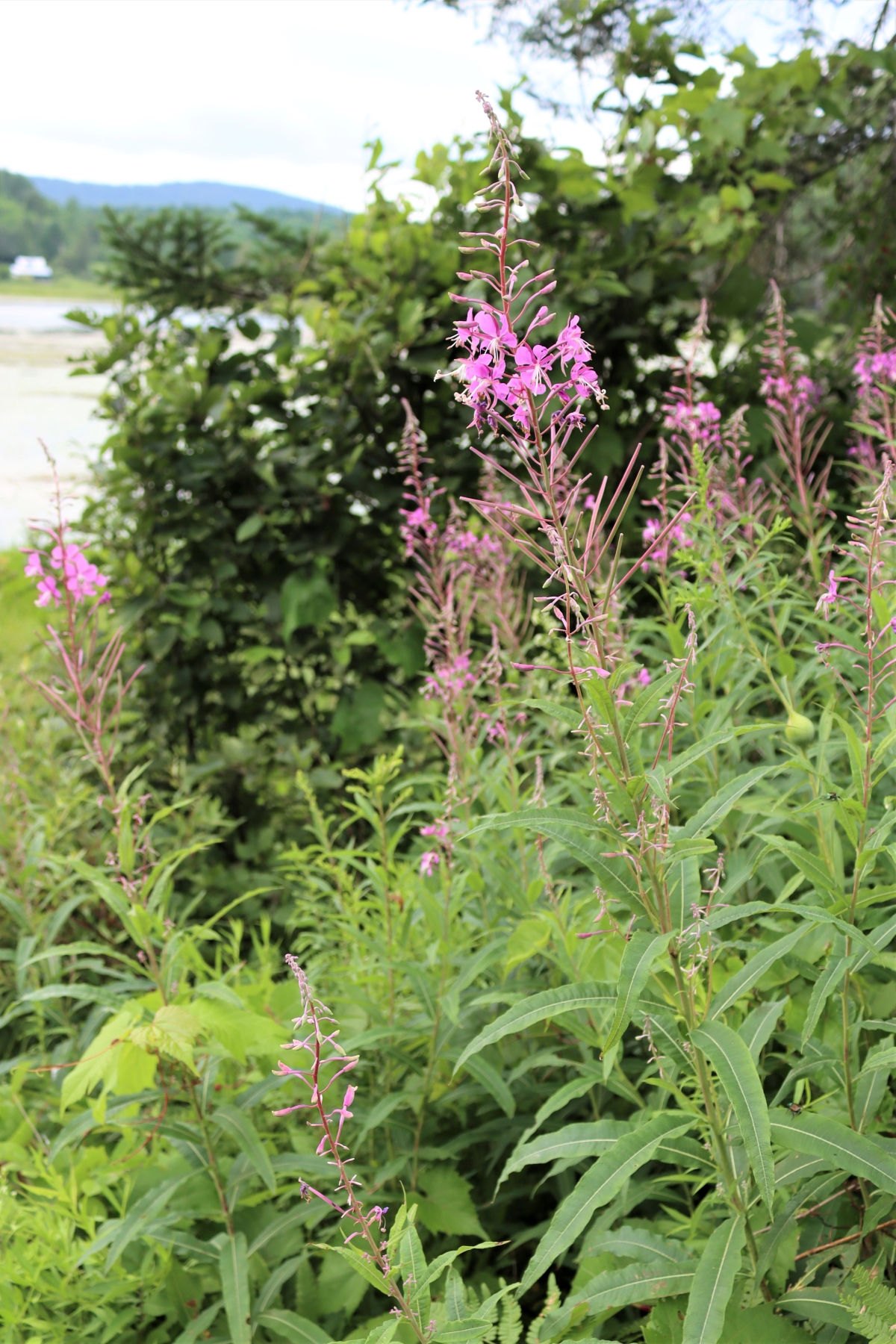
Though fireweed is the most common name in the US, in Europe it’s usually called rosebay willowherb. The flowers just a slight bit like wild roses, and the leaves look a bit like bay leaves. It also goes by the name St. Anthonies’ Laurel and Great Willowherb.
As they say, a beloved child has many names, and this one’s known and eaten around the globe.
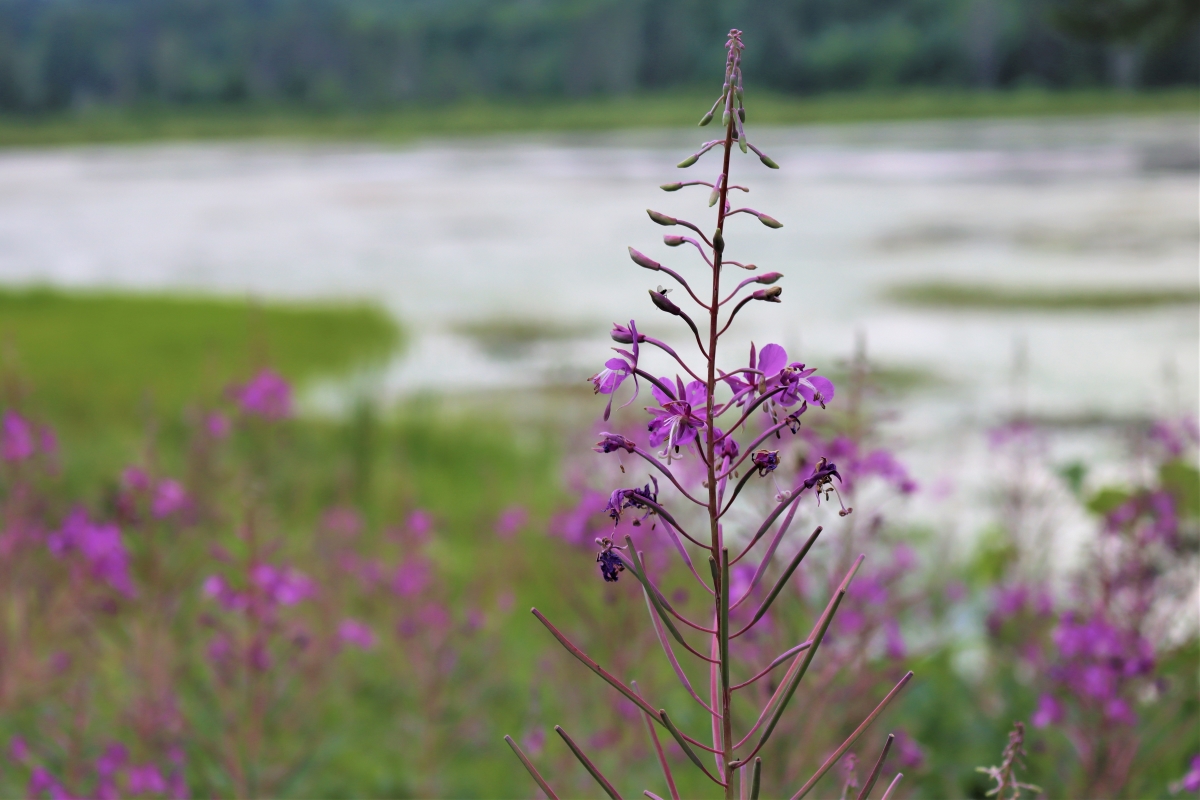
Fireweed Identification
Identifying fireweed isn’t particularly difficult, as it’s rather distinctive.
Be aware that it does have one look-alike, namely Purple Loosestrife, which is also edible and medicinal. Purple loosestrife has 5-7 petals (as opposed to 4) and the central stalk is square (instead of rounded).
That’s the only other plant (that I know of) that’s a look-alike to fireweed. There’s always the possibility that there are others that I don’t know, so as always, take time with your ID and consult multiple sources.
There are other purple-flowered plants that are toxic. Foxglove, for example, is deadly toxic, but while it does have a central stalk and purple flowers, they are bell-shaped and don’t really look much like fireweed flowers in my opinion.
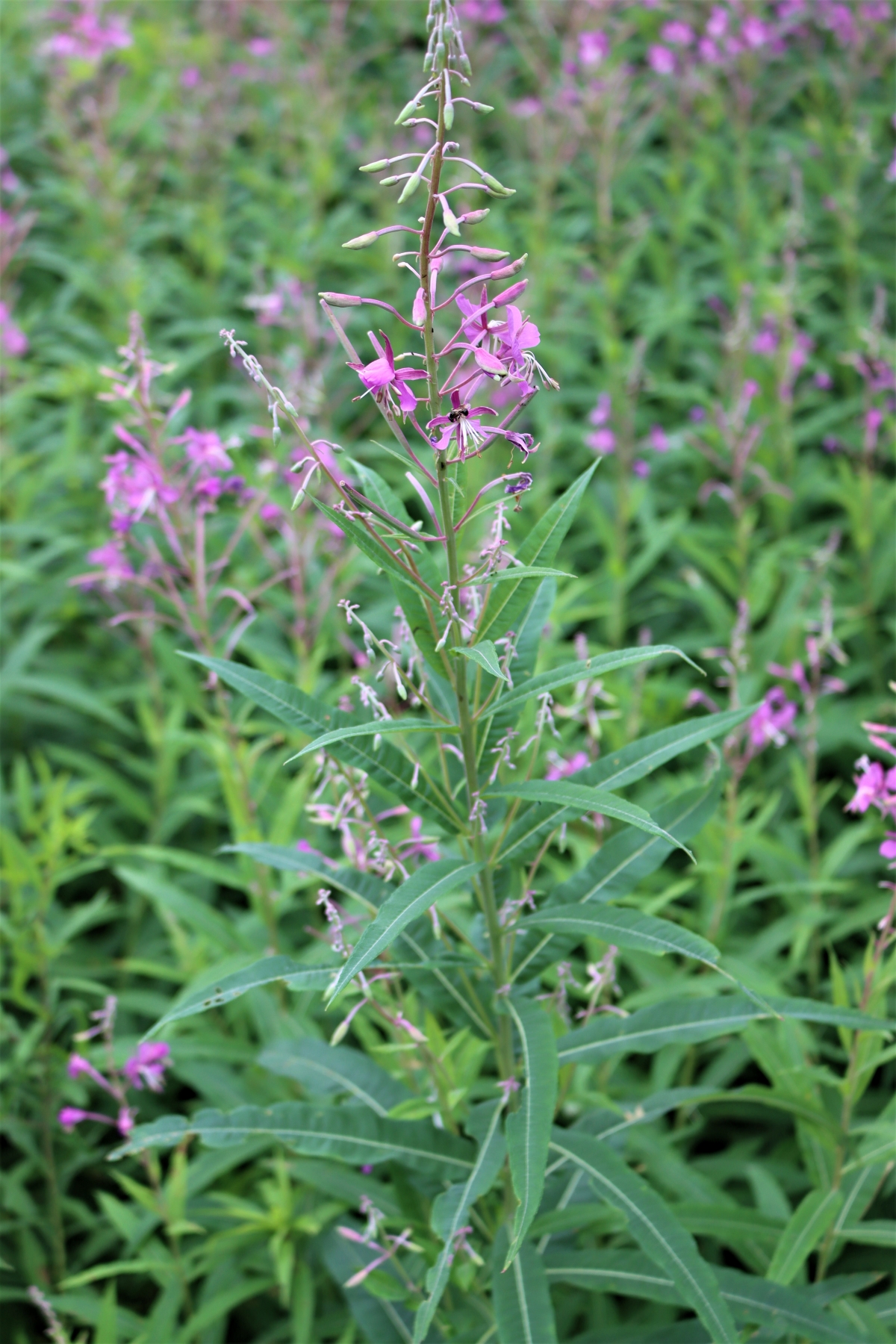
Fireweed Flowers
You’re most likely to spot a patch of fireweed when it’s in flower, as the blooms are quite distinctive. They have a bright pink/purple color, and work their way up the stalk starting in Mid-Summer.
In early Autumn they reach the top of the stalk, usually right before the weather turns truly cold for the season.
They have four bright pink petals, with a dark pink sepal in between each one.
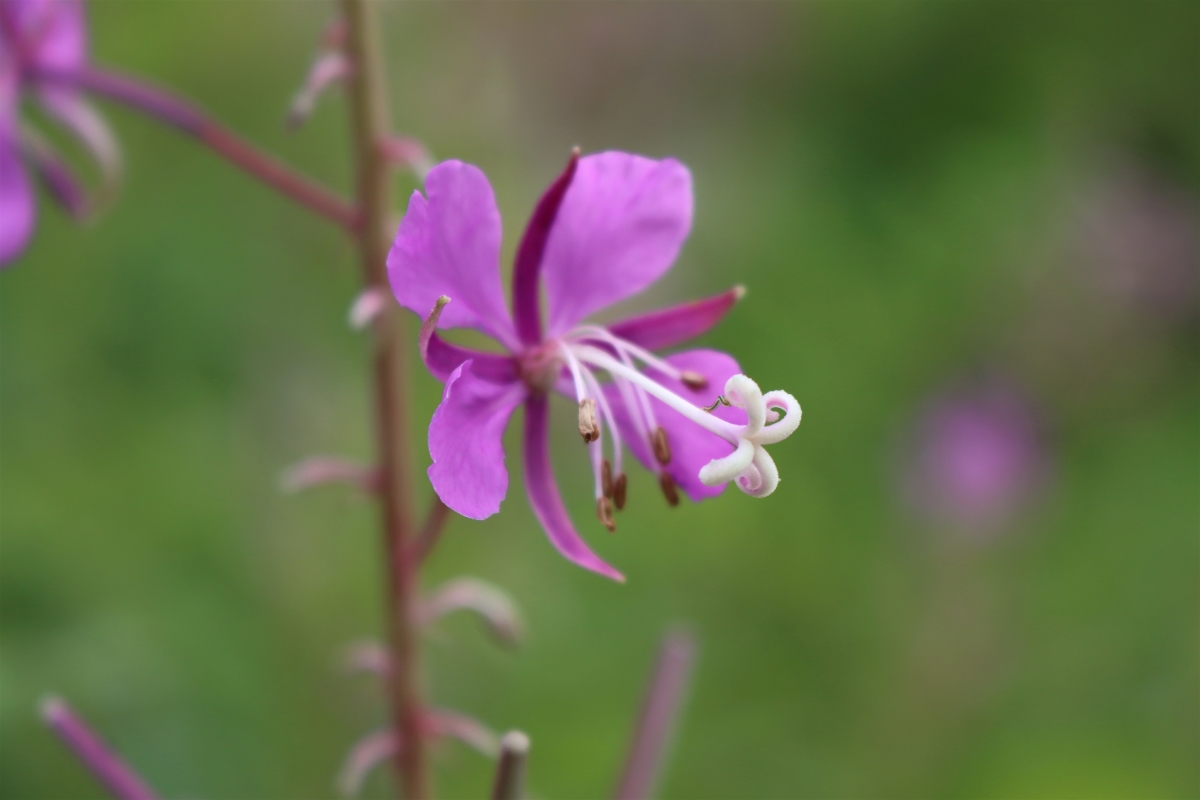
Fireweed flowers are a particular favorite of pollinators, and this patch was buzzing with activity. I could the buzzing in the patch almost before I could see it.
I actually had trouble taking pictures of the flowers themselves without pollinators in them, and this bee just wouldn’t give it up even as I held the blossom stalk to take close-up pictures for identification.
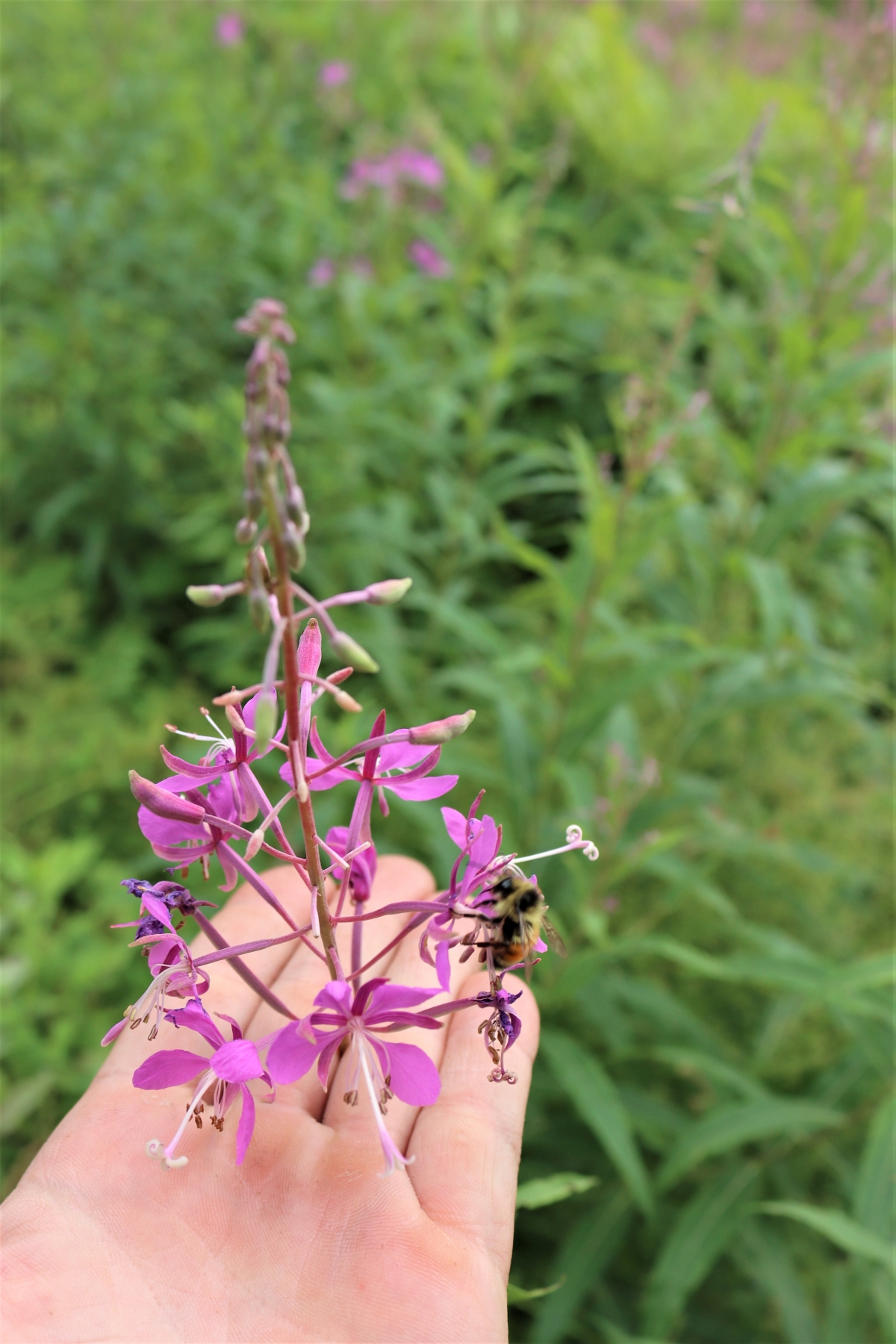
Fireweed Leaves
The leaves of fireweed come out from the central stalk in what looks like a spiral pattern when you view it from above.
They’re narrow and pointed, with a white central vein on each leaf.
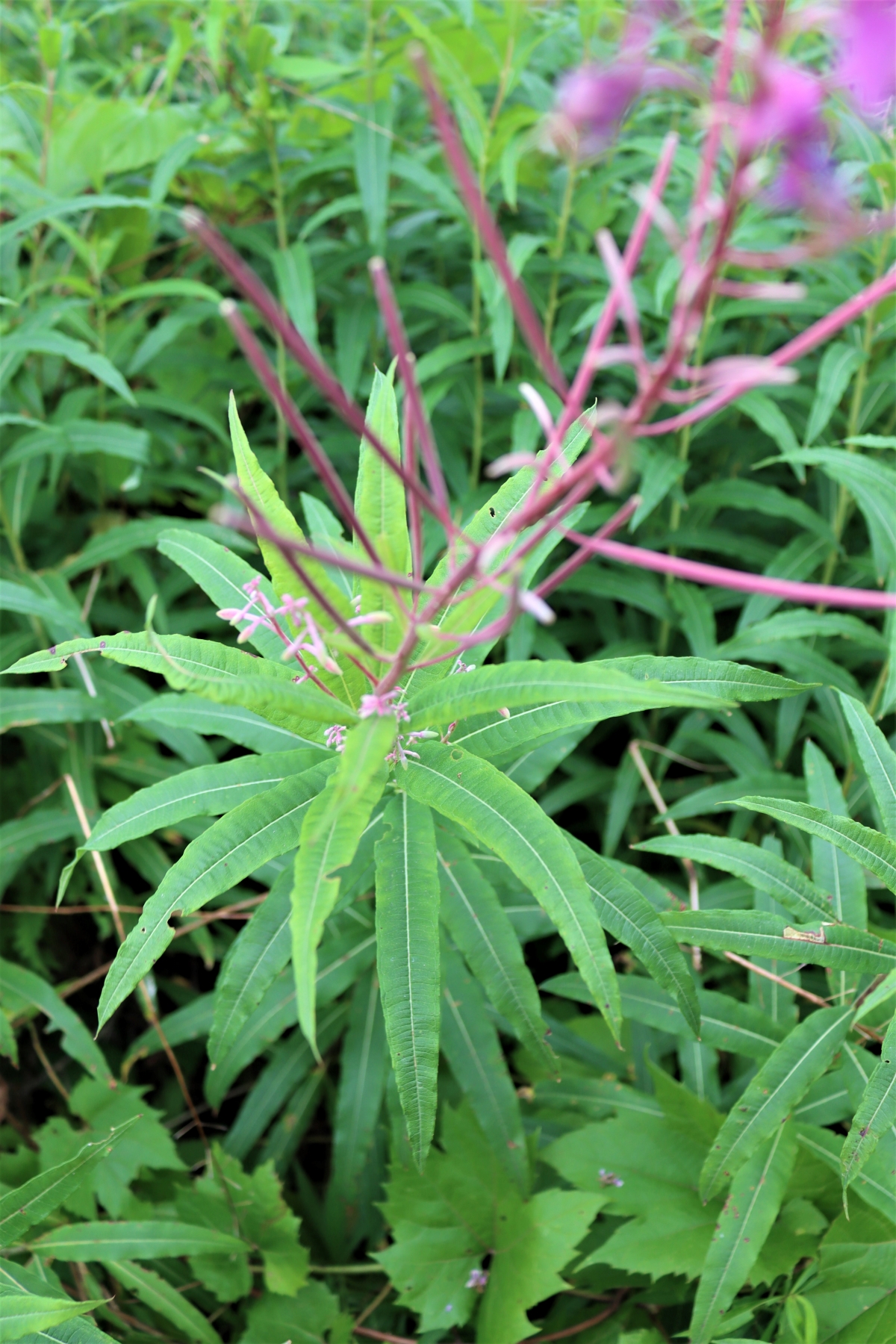
Individual leaves are quite long, stretching 6-7 inches. They’re also prolific, and come out in all directions every few inches up a 6+ foot tall fireweed stalk. It’s easy to see how you could harvest quite a few leaves without much notice.
They arise in an alternate pattern from the central stalk.
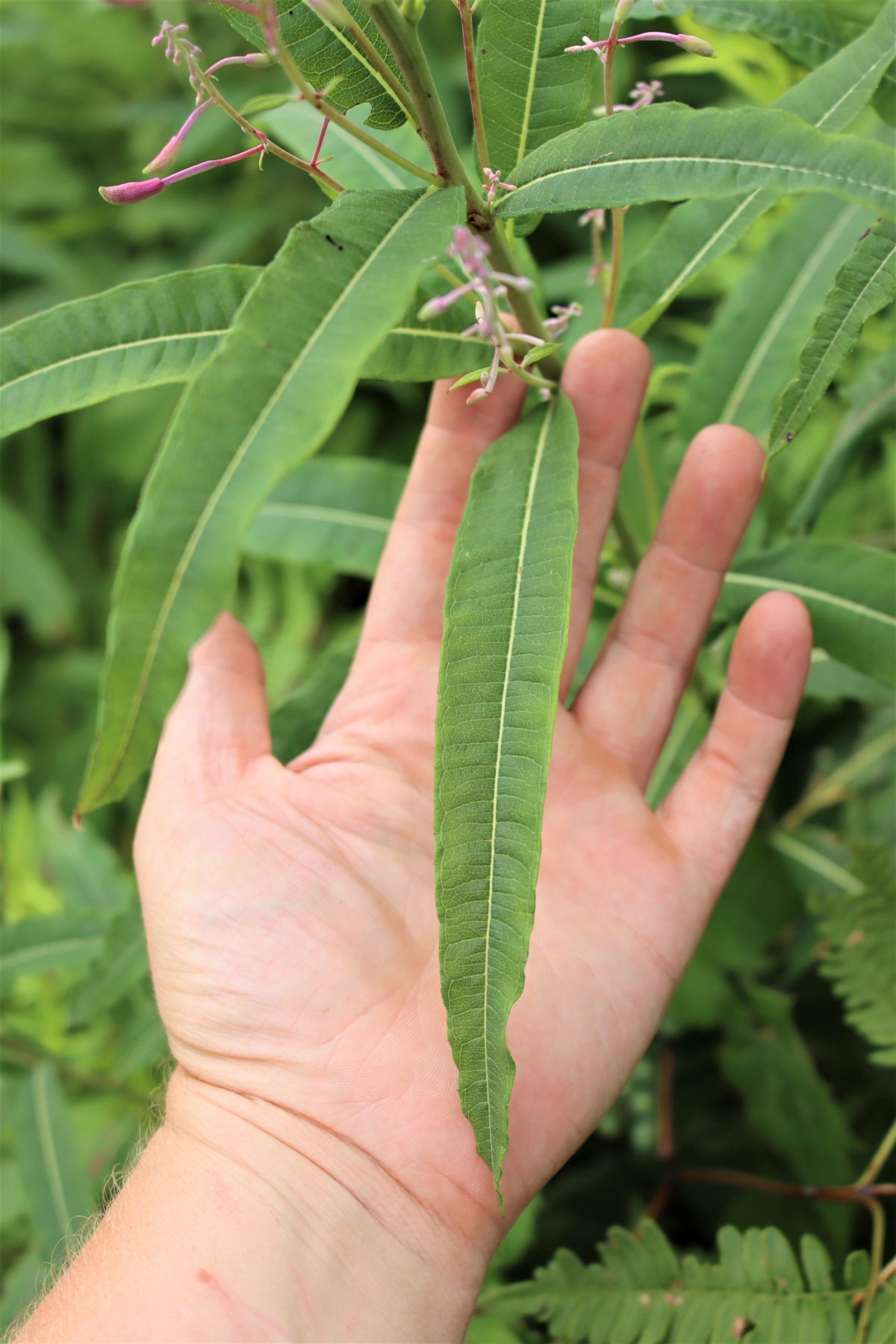
The backside of the leaves is lighter than the dark green upper surface, but the white midvein is still clearly visible.
At this late stage once the plant is in flower the leaves are tough and fibrous, but still used in teas. Early on in the spring, they’re eaten, along with the fresh shoots as a tender spring green.
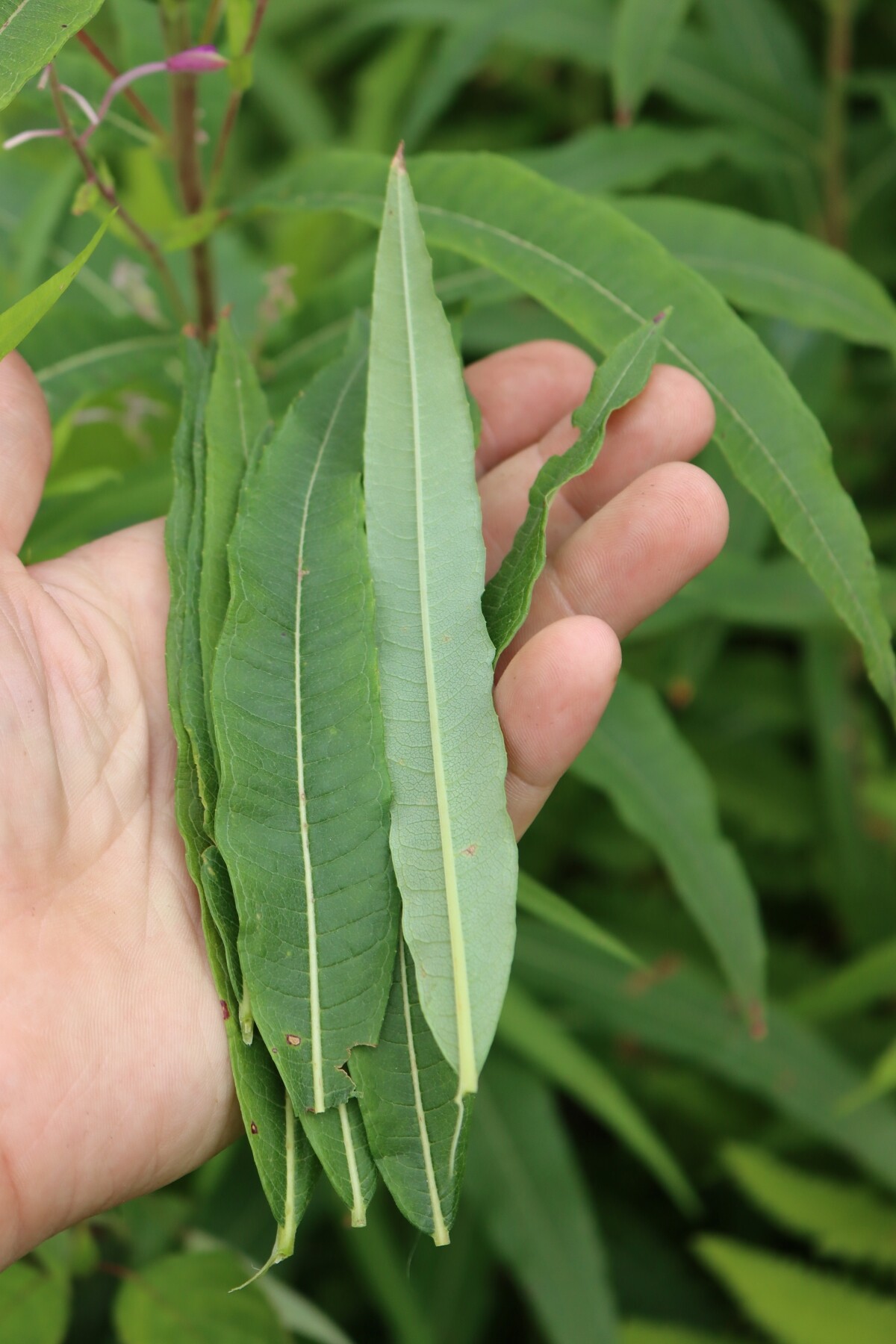
Fireweed Plant Stems
The stems of fireweed are green to red-ish green, as they develop a blush to match the dark pink/rosy sepals of the flowers.
Stems are also considered edible, though only early on in the plant’s lifespan before they become too fibrous.
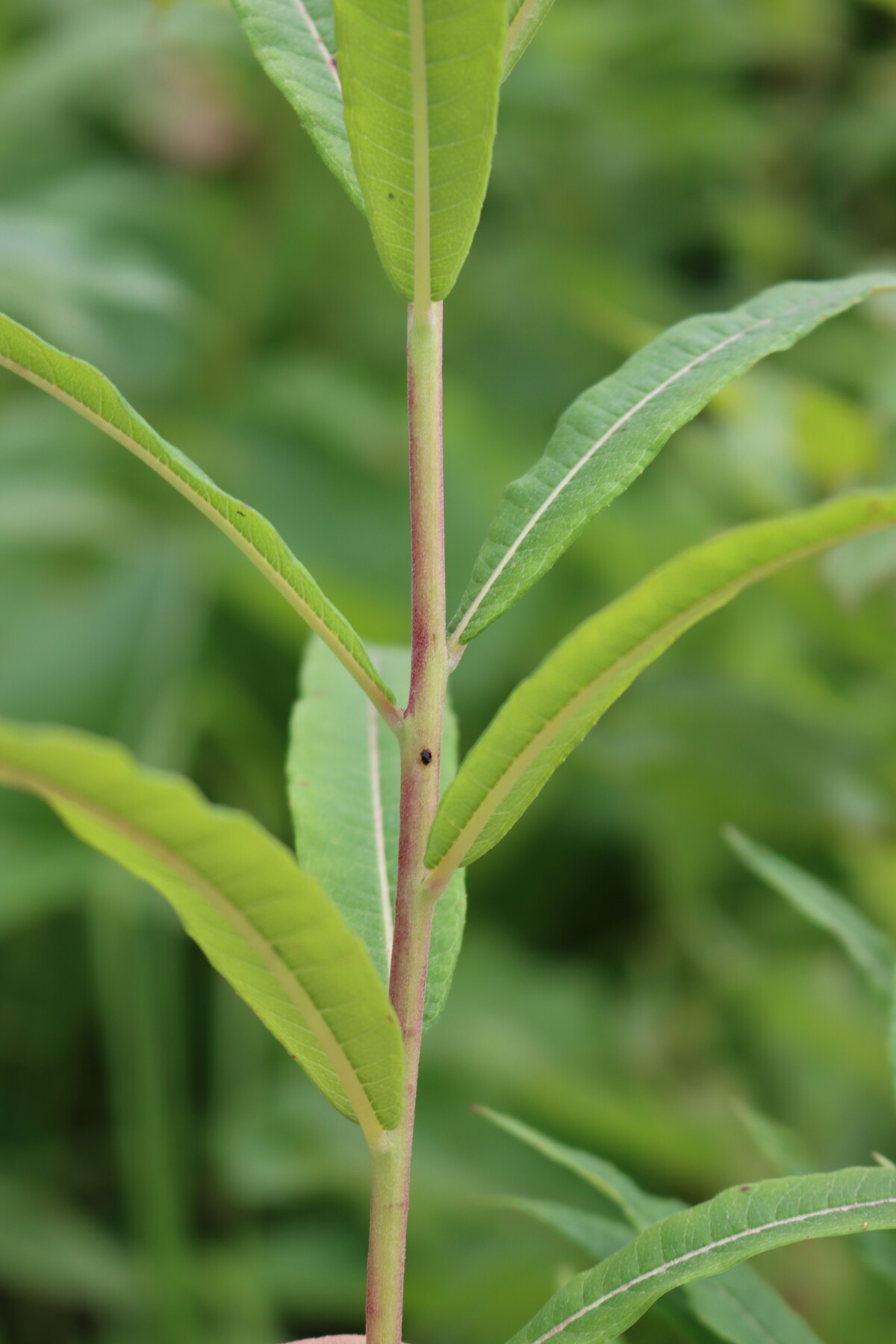
Fireweed Uses
Like dandelion greens, marsh marigold, and other early spring greens, fireweed shoots are harvested young for eating fresh or as a potherb.
Also like dandelions though, they’re not the sweetest green, and our modern palates don’t often appreciate the flavors. Historically, they were an important, abundant and easy to identify source of vitamin C and A, eaten fresh after a long winter on stored food.
I imagine that’s one reason they’re so well-loved in sub-alpine areas where vitamin C is harder to come by than in lower latitudes.
Once the leaves are mature and the plant begins to flower, they’re a bit too fibrous and bitter for even the most adventurous of eaters. At that stage, fireweed leaves are made into “Ivan Chai,” which is also simply known as “Russian Tea.”
The preparation involves bruising, then fermenting the tea leaves (as is done with regular tea) before drying. My friend Chris at Joybilee farm has detailed instructions for making Ivan Chai from Fireweed leaves. Definitely follow the process through the steps over a couple of days, as using the fresh leaves for tea tastes pretty horrible.
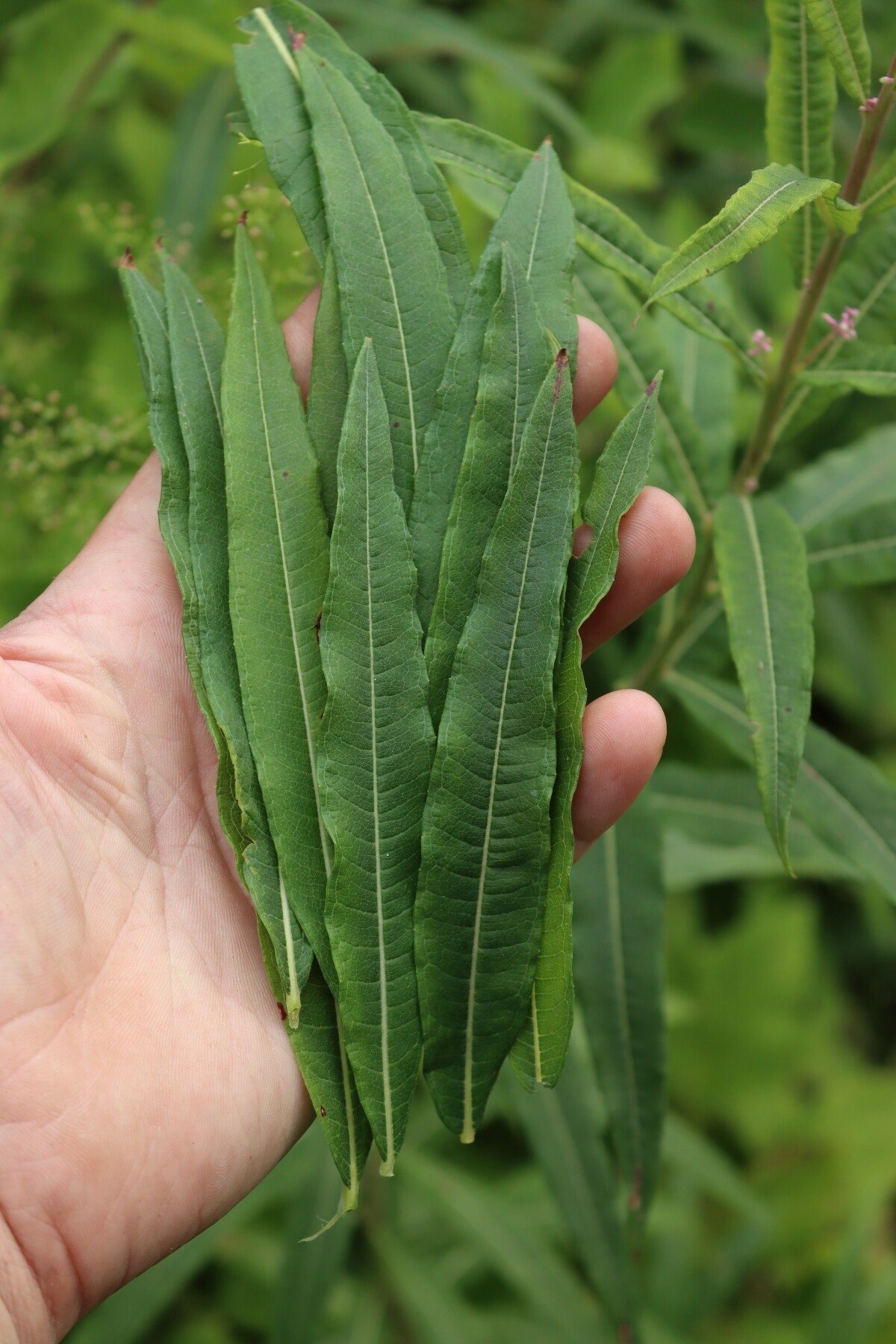
The beautiful flowers of fireweed are more than just food for the eye, they’re also edible flowers.
You can harvest them pretty quickly, since they’re abundant and grow together on tall stalks. Any harvested today will quickly be replaced by flowers further up the stalk tomorrow.
Just watch out for the bees that dart in to sip the sweet nectar from the flowers, and be sure to leave plenty for them too. It shouldn’t be a problem, fireweed usually grows in huge colonies and it’s almost invasive in its tendencies.
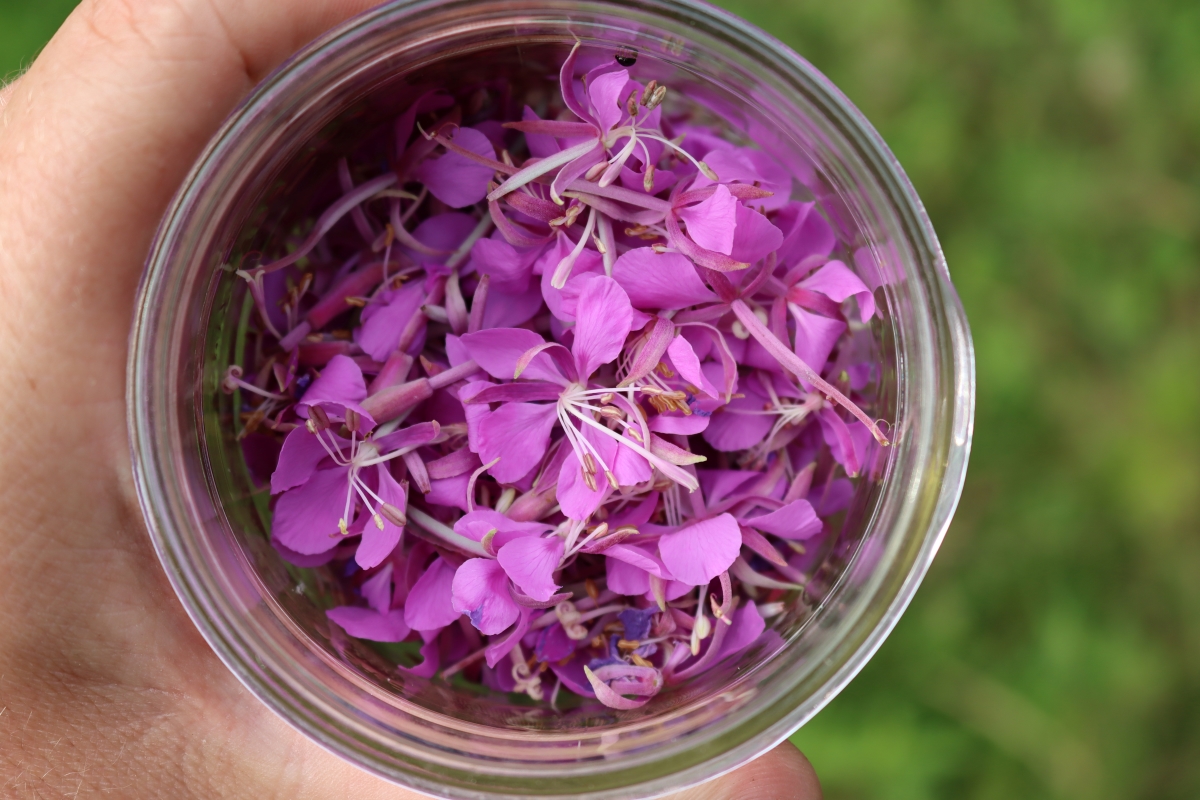
The flowers can be eaten fresh out of hand or used to decorate salads.
Or, you can make fireweed jelly as they often do in Alaska or the Yukon. It’s simple and is exactly the same as making any other flower jelly.
Start by making a tea from the flowers, then strain and turn it into a jelly with sugar, pectin, and lemon juice.
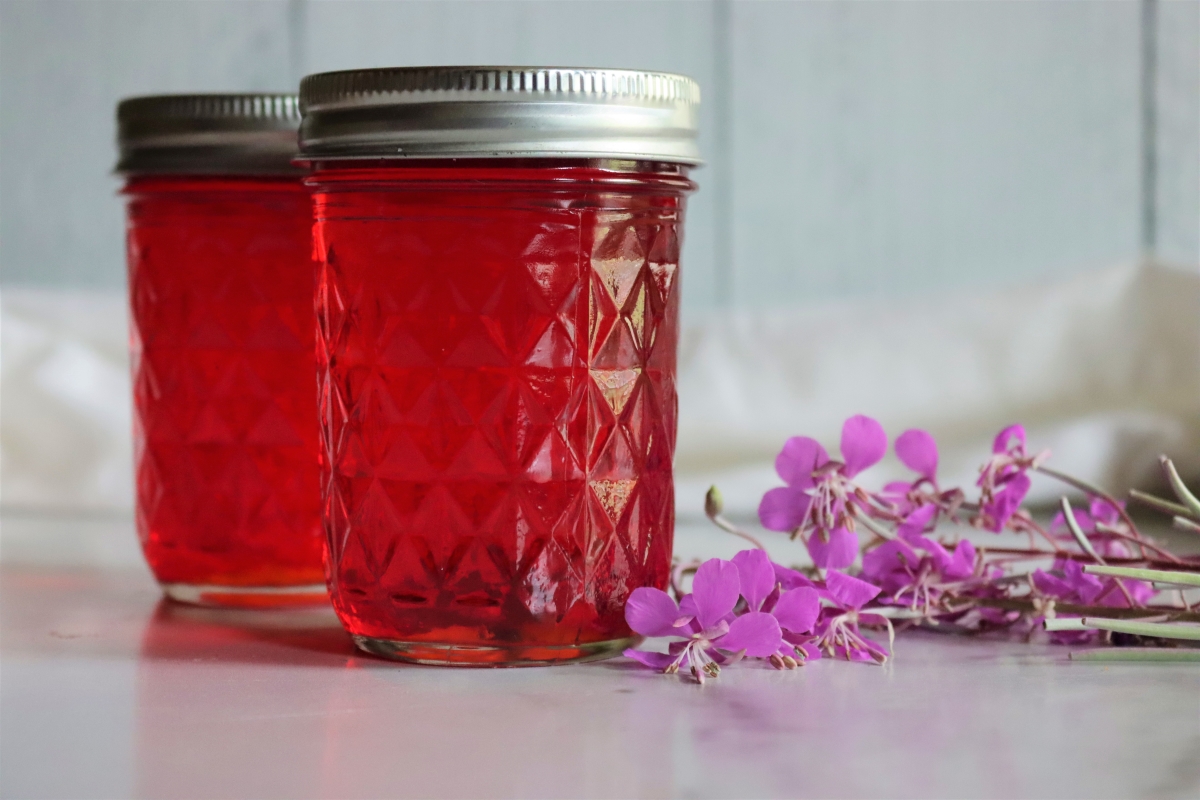
Foraging Guides
Looking for more foraging guides?
- Foraging Elderflower
- 50+ Edible Wild Berries and Fruits
- Foraging Ramps (Wild Leeks)
- Poisonous Berries ~ A Foragers’ Guide
- Foraging Morel Mushrooms
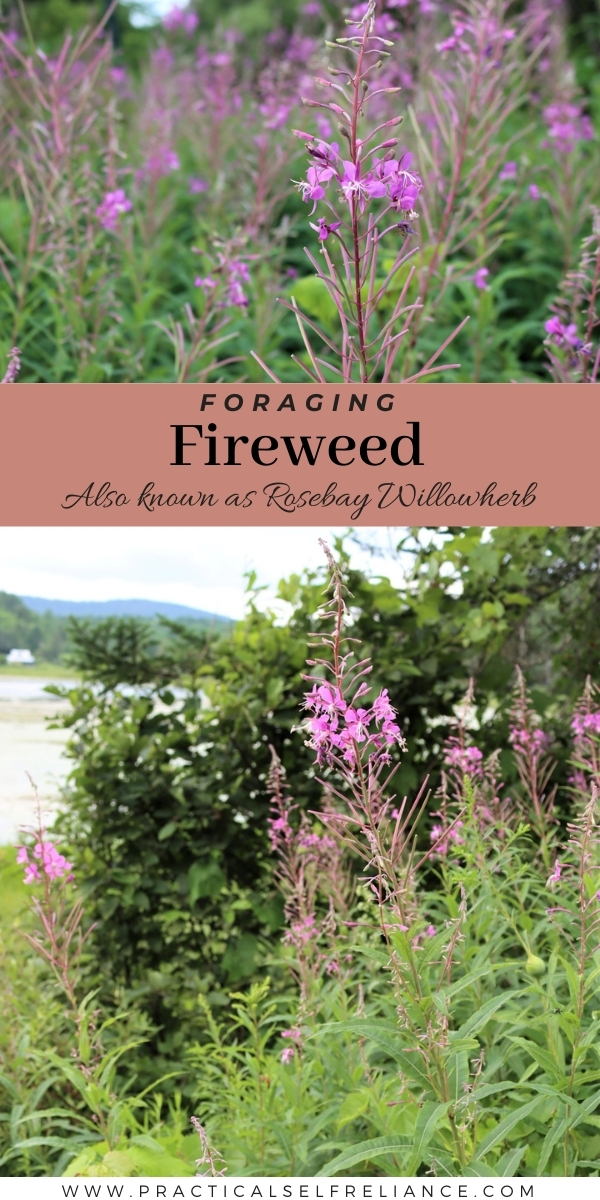




There’s a lot of conflicting information out there. From what I’ve read fireweed is toxic, then I see websites like this saying it’s edible. I’m so confused, which is it?
There are many medicinal plants that might have a toxic component or that can be toxic when taken in large quantities or when prepared improperly. It’s important to have trusted sources for herbal information which can be difficult sometimes when there are so many differing opinions. The best advice that I can give is to do lots of research and then make your own decision based on what you find.
Thank you so much for this information. I didn’t see what medical uses were for fireweed! I will keep an eye out for it in the future.. new to foraging.
I use dead fireweed stalks for cordage, it makes a strong red string. Didn’t know it was edible until now.
I dry a lot of fireweed for green tea. I simply lay the leaves in open Leaf baskets or screens to air dry. In the summer I make a lot of sun tea with some combination of fireweed, stinging nettles, lemon balm, mint, calendula flowers, hibiscus, and rooibos. I searched for a long time on the internet and found on YouTube Russian videos about how to make Ivan chai. The quickest method I came across is to grind the leaves in a meat grinder rather than to hand roll them. I let them ferment in a crock and check on them daily and stir them at the same time. After a few days they start to have a beautiful floral smell. When that aroma appears I then lay them out on cookie sheets in the sun to dry and store for the winter. They look like little alfalfa pellets. I like to harvest the leaves sometimes before the flowers appear as I know where my patches are and I can find them before they’re in flower. But picking them earlier or mid-season is best. They get drier and more bug bit later in the season. I recently drive some of the flowers. They have such a strong perfume when they’re dried I wonder if anybody who makes perfume has worked with them? I just thought I’d let everyone know that they can drink a green tea from the leaves without processing them into a black tea. When you harvest the leaves all you have to do is take your hand and go down the stalk and they fall right off. I only take half the leaves for many given plants so that it can keep growing and go to seed.
I am not sure about the perfume but that’s an interesting thought. Thanks for sharing your tips.
I am in northern BC. Fireweed grows abundantly up here. I use it dried in a salve for skin. Fireweed jelly is popular here and very good!